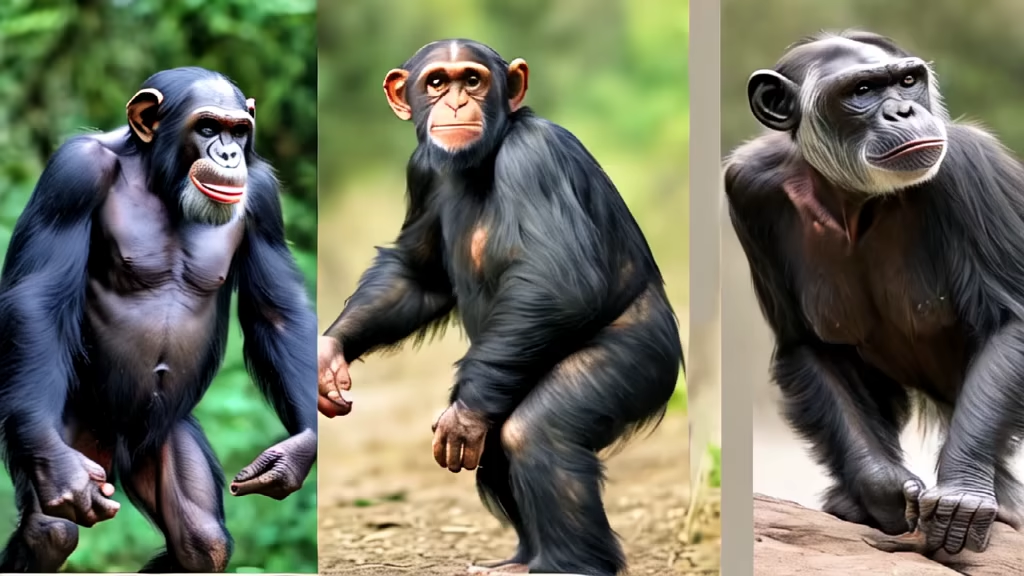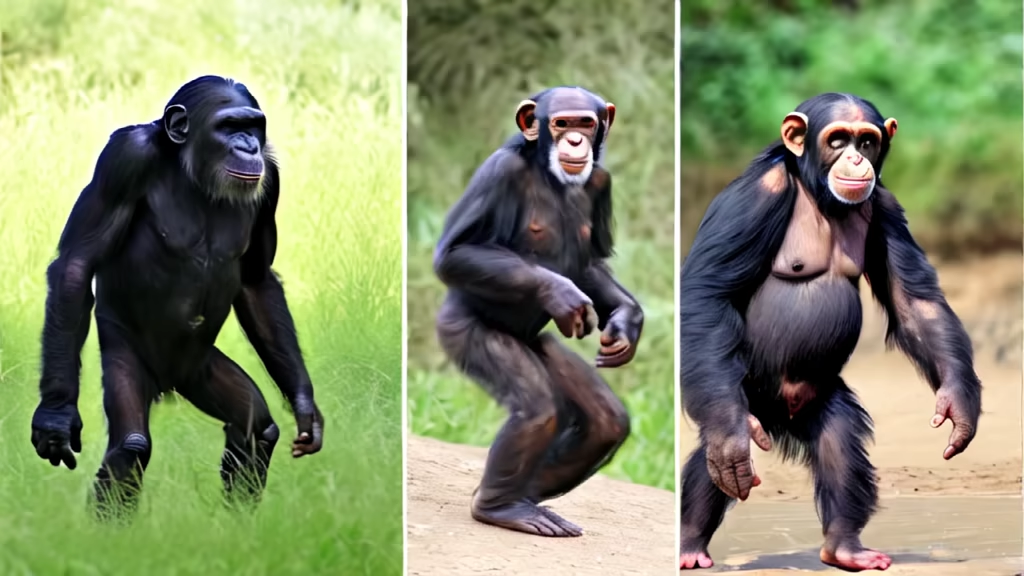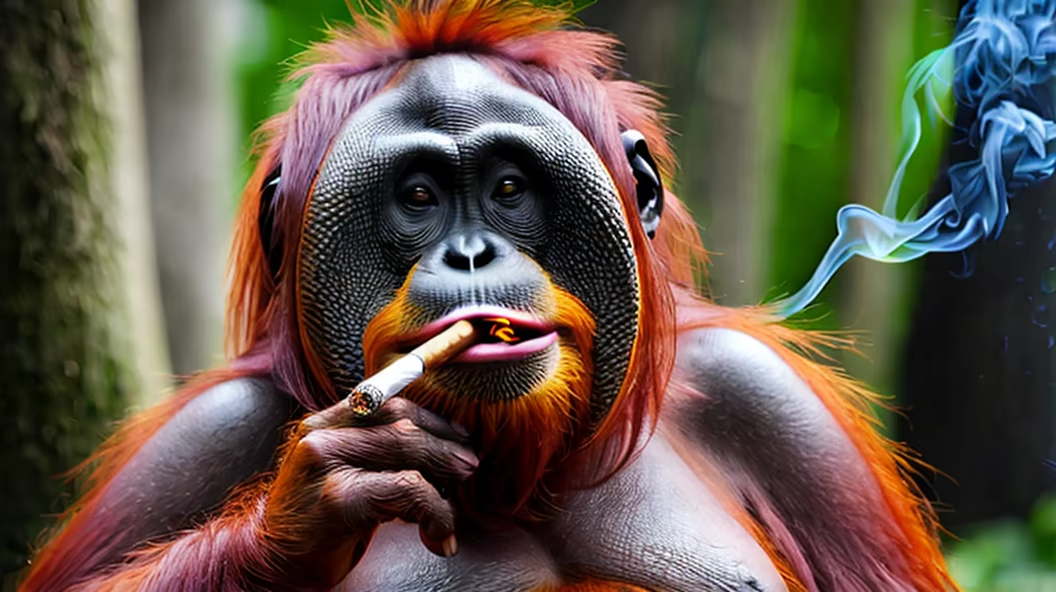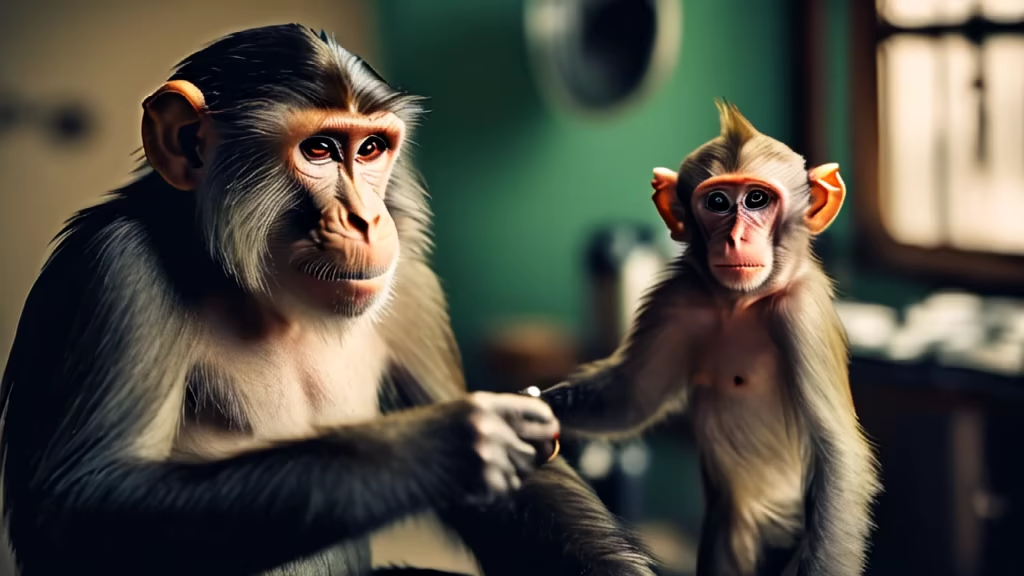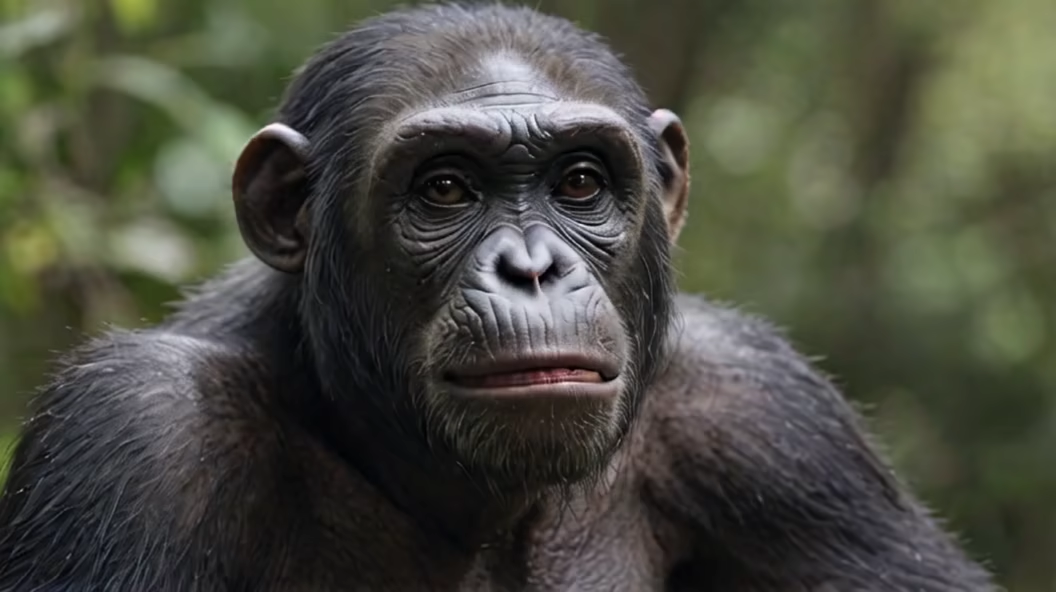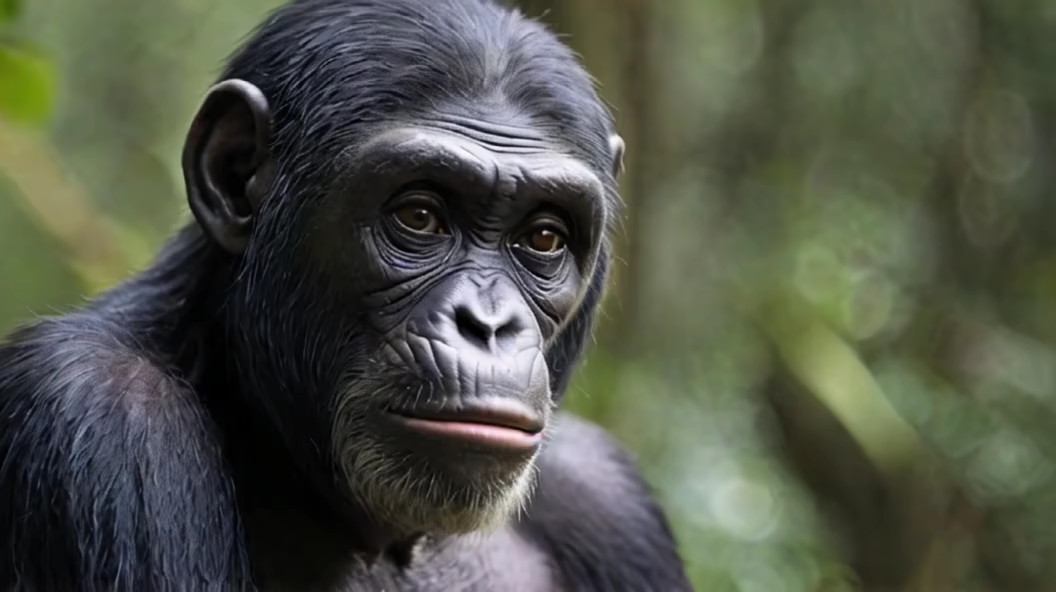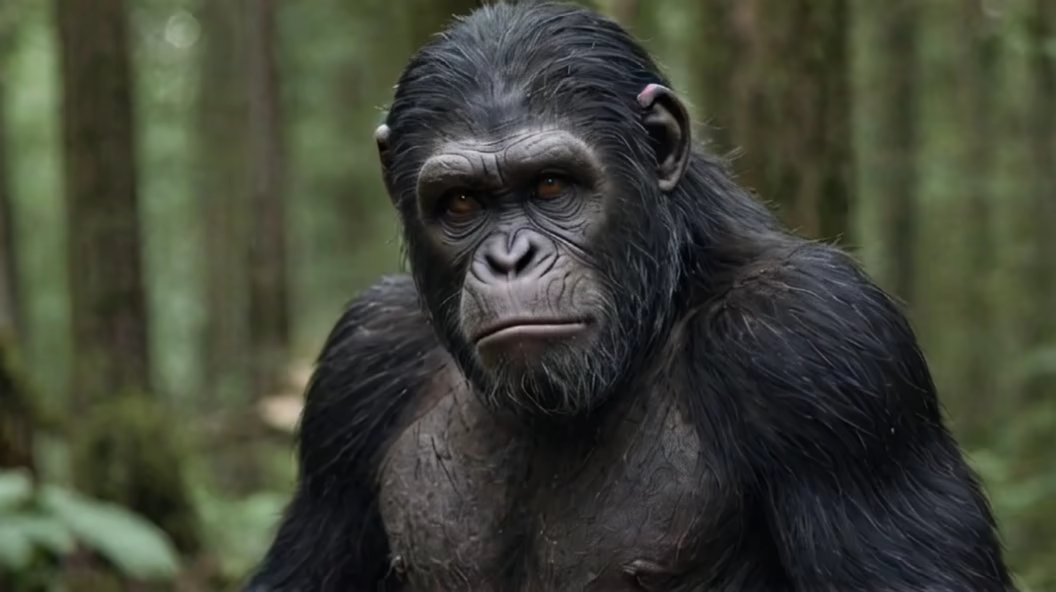

Prompt: An anthropomorphic chimpanzee, orangutan wearing stylish winter clothes, pants, shoes, accessories, walking in a gorgeous scene, full body, domineering, cool, Milan fashion show, Paris fashion show, New York fashion show, gorgeous background, high-end fashion design , photo blockbuster, the picture is very detailed, ultra-realistic, 8k photography art, masterpiece, award-winning work, capturing action.
Style: Photographic


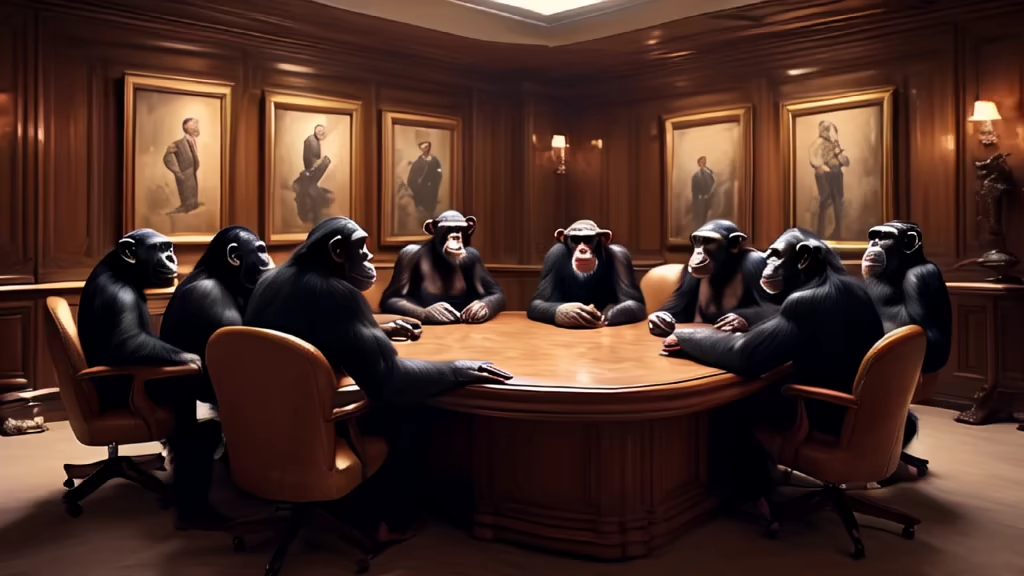
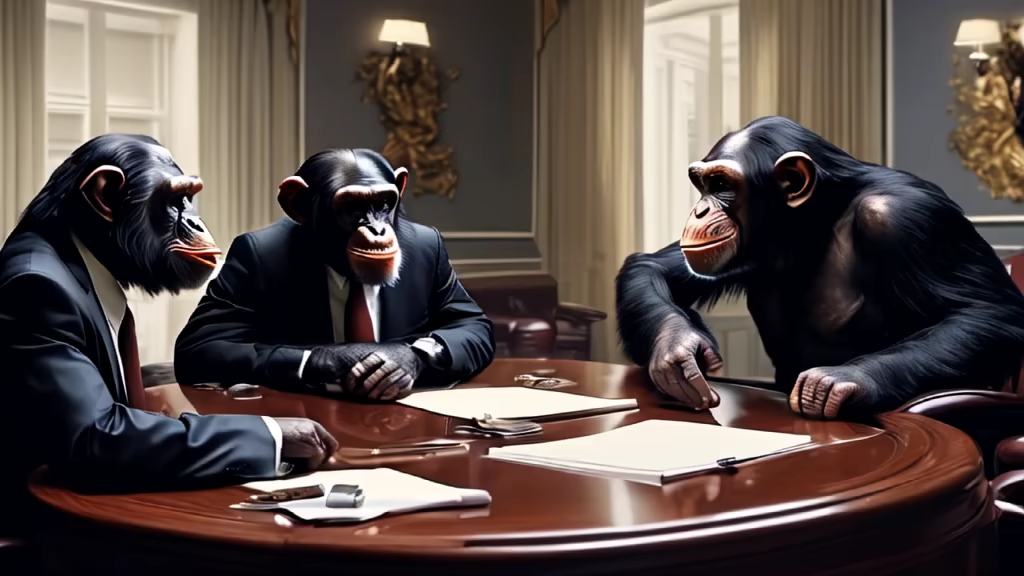


Prompt: hiphop orangutan. (oil, sfumato, zao wou-ki, wlop, jan urschel, jacek yerka, uhd, hyperrealistic, best quality, breathtaking, stunning)




Prompt: A gorilla was conducting chemistry experiments in a library while a penguin was watching carefully


Prompt: A gorilla was conducting chemistry experiments in a library while a penguin was watching carefully
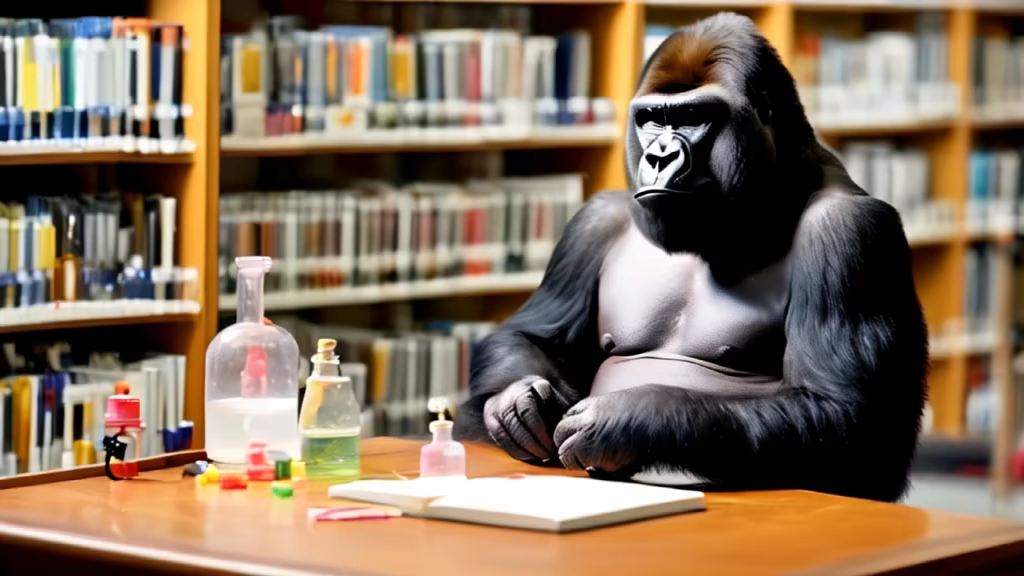
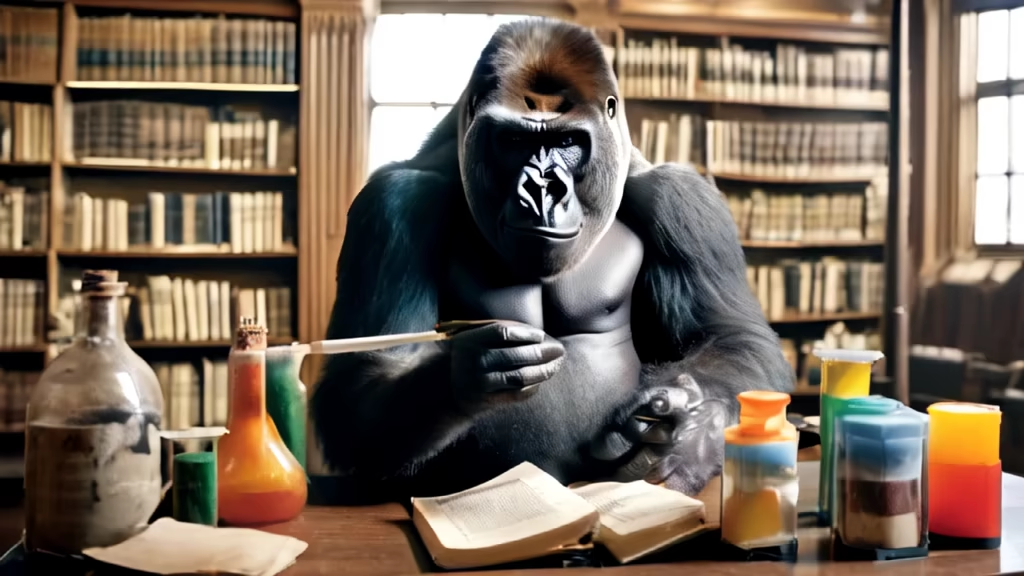
Prompt: An anthropomorphic chimpanzee, orangutan wearing fashionable winter clothes, pants, shoes, accessories, walking on the catwalk, full body, domineering, cool, Milan fashion show, Paris fashion show, New York fashion show, gorgeous background, high-end fashion design, Photo blockbuster, the picture is very detailed, ultra-realistic, 8k photography art, masterpiece, award-winning work, capturing action.
Style: Photographic


Prompt: An anthropomorphic orangutan, orangutan wearing stylish winter clothes, pants, shoes, accessories, walking in a gorgeous scene, full body, domineering, cool, Milan fashion show, Paris fashion show, New York fashion show, gorgeous background, high-end fashion design , photo blockbuster, the picture is very detailed, ultra-realistic, 8k photography art, masterpiece, award-winning work, capturing action.
Style: Photographic


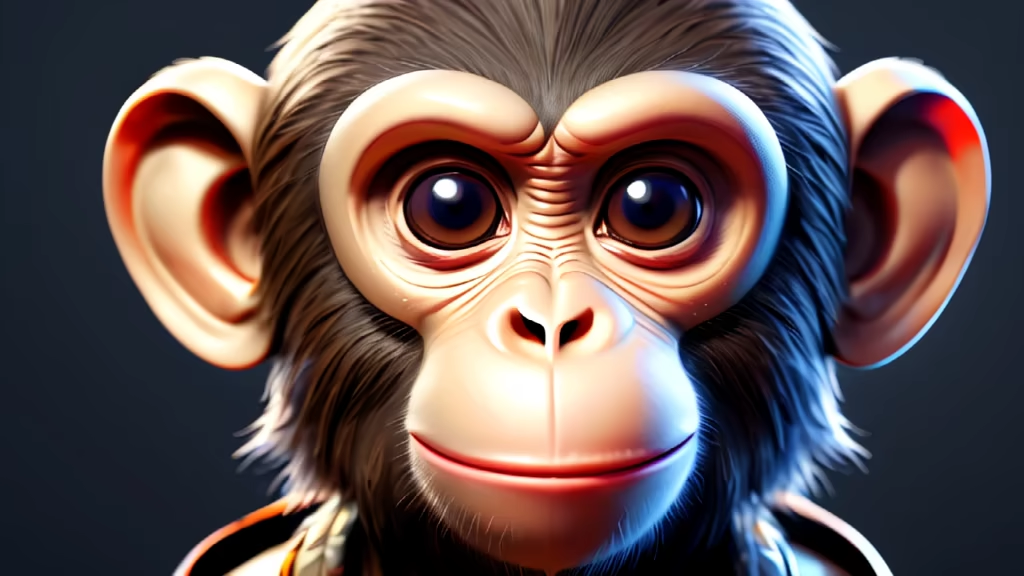
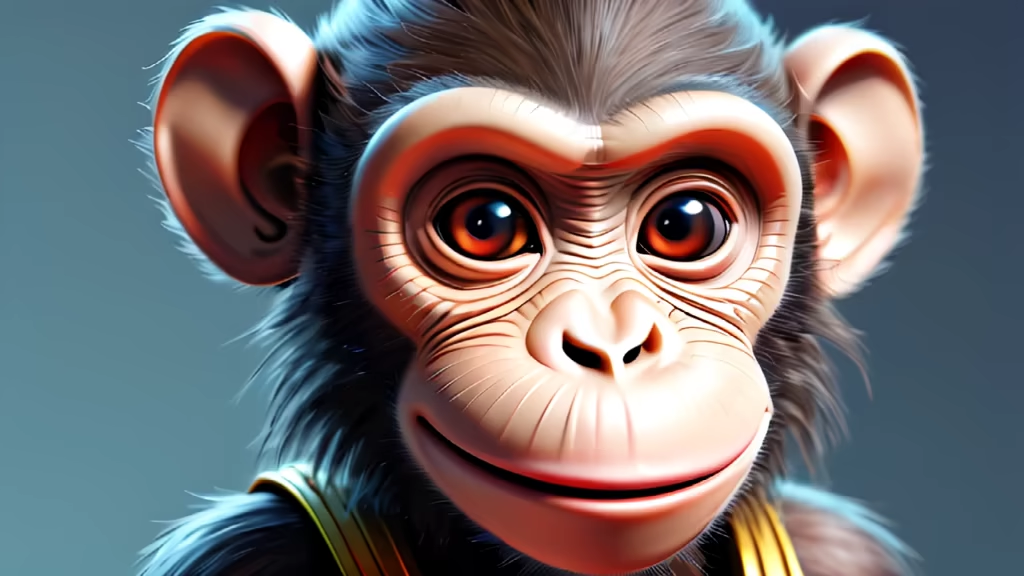
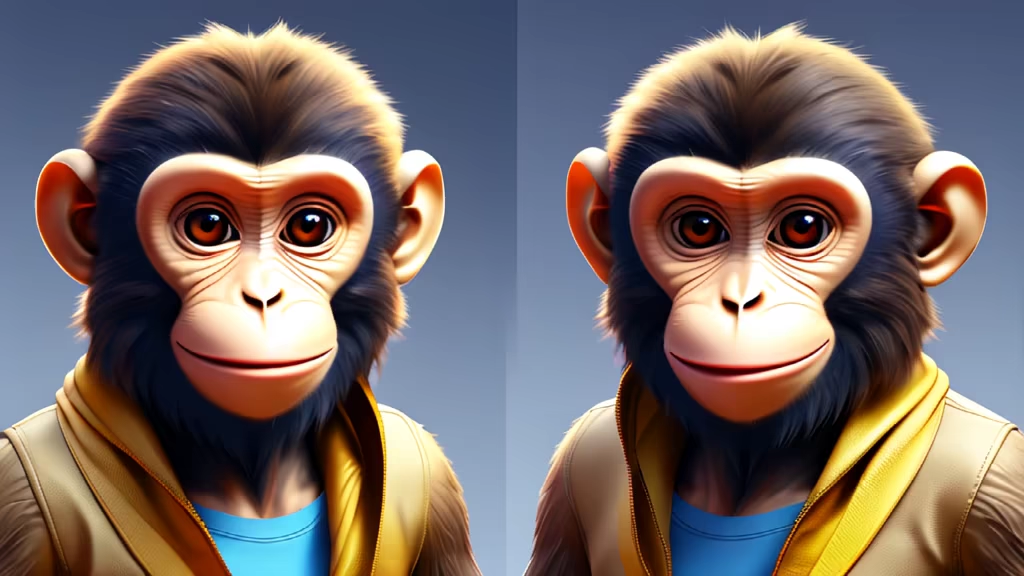
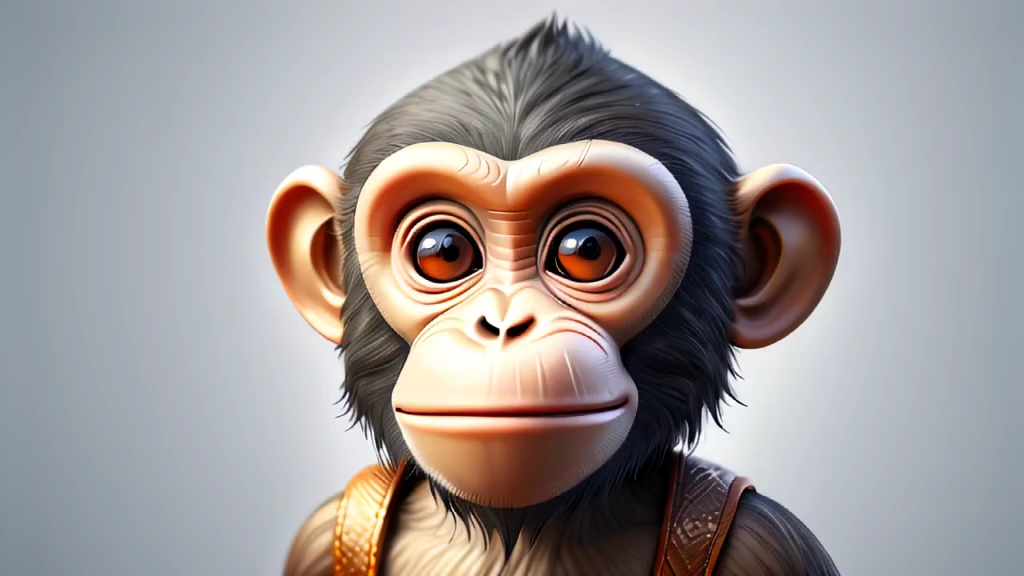
Prompt: Snow-dusted sequoia forest, lone figure trekking, detailed linocut illustration, inspired by James Gurney, Mike Mitchell, John Seerey-Lester, and Alan Lee, muted earth tones, intricate lines, fine-grained texture, hint of fog in the air, silhouetted trees towering to the sky, minimalist composition, moody winter lighting, nostalgic ambiance, 12K masterpiece digital linocut.




Prompt: photorealistic tired and haggered music producer slumped over his desk in his music studio tired but thrilled to be at the desk working on music. He is an orangutan in a dressing gown




Prompt: ((render)) of a detailed skull made of circuit boards and wires, geometries, digital art, Radio-head, intricate detail, 8K, hyperrealistic rendering, cinematic, c4d and octane project, artstation
Negative: poorly rendered, unrealistic, deformed, painting














Prompt: aztec orangutan. (oil painting, sfumato, zao wou-ki, zhelong xu, wlop, jan urschel, jacek yerka, uhd, hyperrealistic, best quality, breathtaking, stunning)


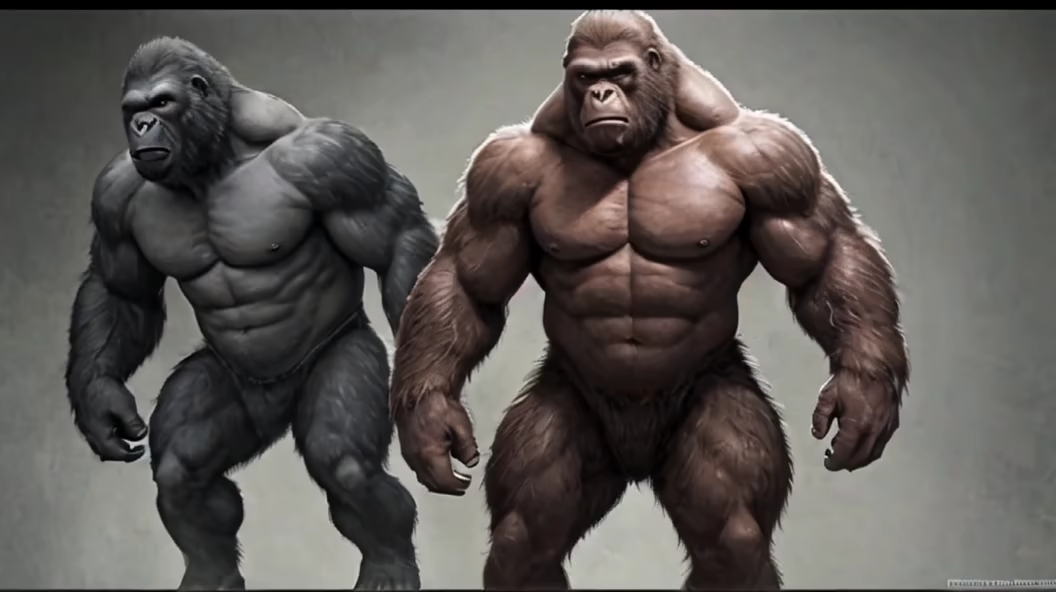
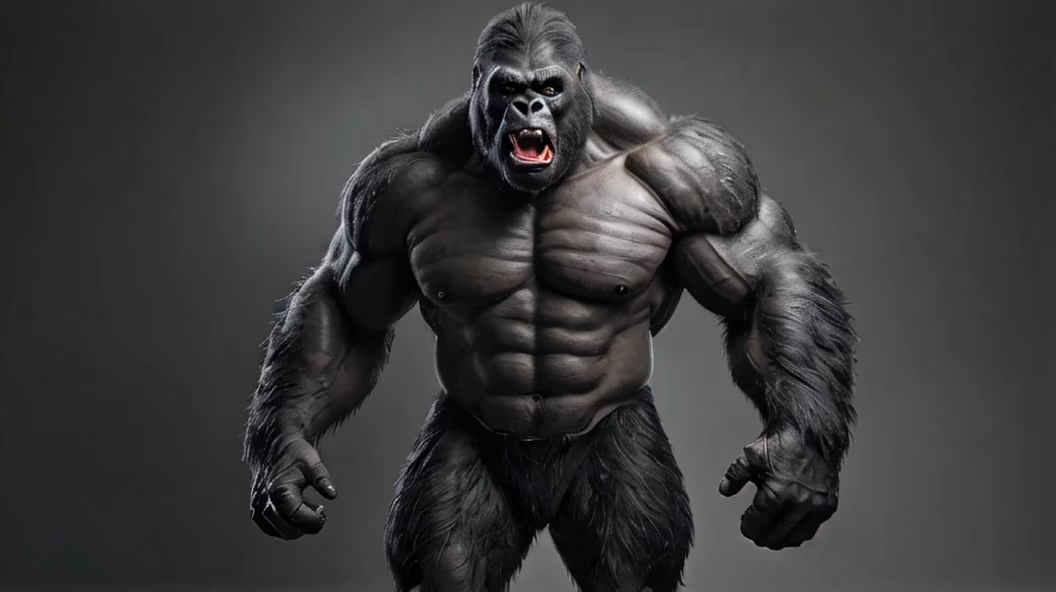
Prompt: A photo-realistic rendition of chimp parliament, furrowed brows in debate, gesticulating hands wrapped tight around vine scepters, stoic faces in communal discussion, dappled forest clearing gathering, natural lighting, hyper-detailed fur textures, capturing nuanced emotional expressions, documentary photorealism, 8K resolution, photo composite manipulation, trending on unsplash, masterpiece.








Prompt: Je veux un logo représentant un visage réaliste d'un ourang-outan dans un cercle. Autour de ce cercle il doit être écrit \"Refuge des Ourang-Outans de Bornéo\". cette image représente le logo d'une association
Style: Photographic






Prompt: spider monkey in panopy. (headshot, oil painting, hyperrealistic, breathtaking, extreme negative space, uhd, zao wou-ki, zhelong xu, wlop, huang guangjian. wlop)
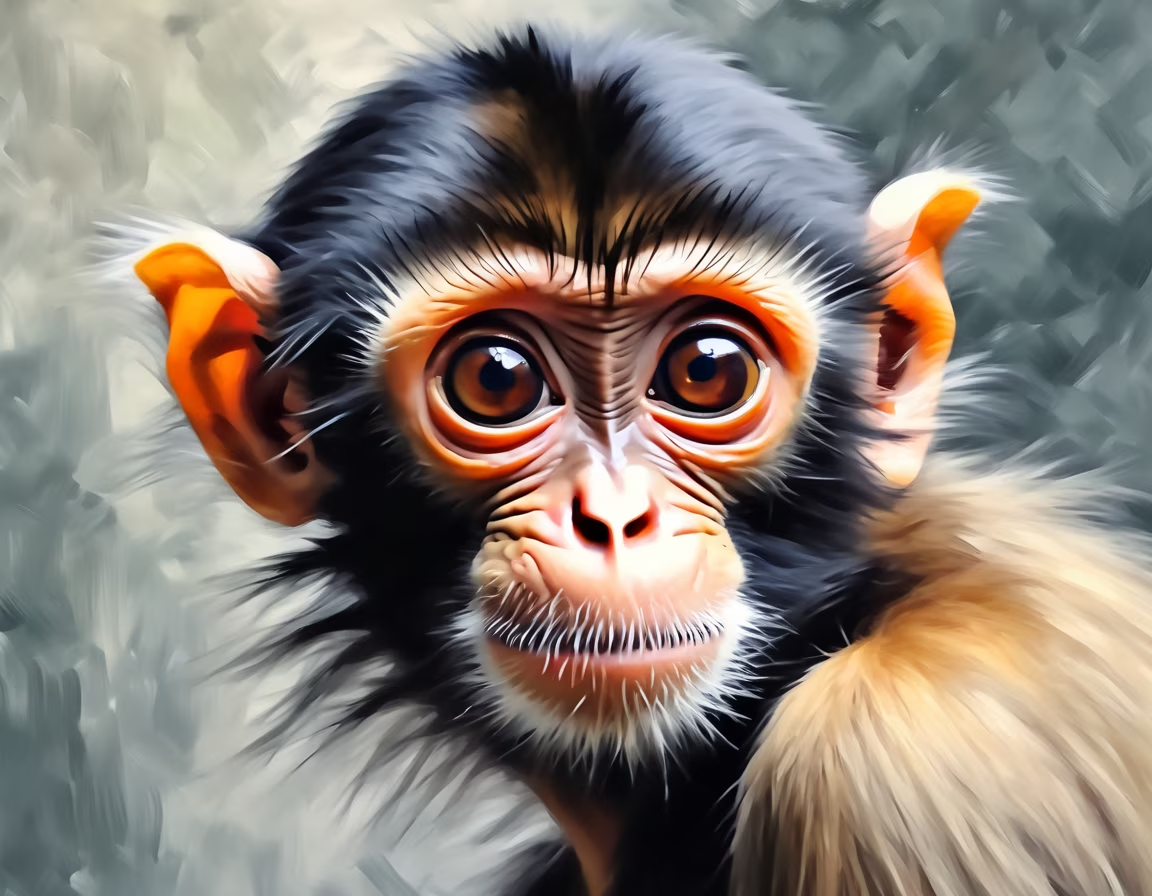





Prompt: photo realistic image of a human ape wearing a grey short sleeve wet-suit, he has a beeper on his hand, is in front of a white townhose, very realistic and detailed


Prompt: evolution from chimpanzee can be understood by examining the shared ancestry and the subsequent development of distinct traits that have culminated in the modern human species. Around 6-7 million years ago, humans and chimpanzees shared a common ancestor. This common ancestor likely resembled a chimp-like creature with some human-like traits. Over time, due to various environmental and genetic factors, including adaptations to new habitats and changing climates, the species diverged. One of the most notable differences between humans and chimpanzees is bipedalism or walking on two legs. The ability to walk upright is a defining characteristic of the human species and allowed our early ancestors to efficiently navigate the African savannah. This adaptation freed up the hands for other activities like tool use and eventually enabled the development of our sophisticated manual dexterity. Another significant evolution occurred in the brain. Human brains are much larger, relative to body size, compared to chimps. This increased brain size is associated with the development of higher cognitive functions, such as language, complex problem-solving, and rational thinking. The expansion of the brain also coincided with the development of more complex social structures and cultural advancements. Further differences can be observed in physical features such as the structure of the pelvis, limb proportions, and vocal apparatus. The human pelvis is wider and more bowl-shaped, facilitating bipedal locomotion and childbirth. Humans have longer legs relative to arm length compared to chimpanzees, which aids in efficient walking and running. The structure of the vocal apparatus in humans allows for a wide range of speech sounds, enabling complex language and communication. Although humans and chimpanzees have many shared genetic similarities, there have been numerous genetic changes over millions of years to produce the distinct traits observed in humans today. These changes can be attributed to a combination of natural selection, genetic mutations, and environmental pressures. In summary, human evolution from chimpanzee involved key developments such as bipedalism, larger brains, enhanced cognitive abilities, changes in physical features, and the development of complex language and culture. These evolutionary changes have led to the emergence of Homo sapiens as a distinct species, with unique characteristics that separate us from our ape relatives.


Prompt: evolution from chimpanzee can be understood by examining the shared ancestry and the subsequent development of distinct traits that have culminated in the modern human species. Around 6-7 million years ago, humans and chimpanzees shared a common ancestor. This common ancestor likely resembled a chimp-like creature with some human-like traits. Over time, due to various environmental and genetic factors, including adaptations to new habitats and changing climates, the species diverged. One of the most notable differences between humans and chimpanzees is bipedalism or walking on two legs. The ability to walk upright is a defining characteristic of the human species and allowed our early ancestors to efficiently navigate the African savannah. This adaptation freed up the hands for other activities like tool use and eventually enabled the development of our sophisticated manual dexterity. Another significant evolution occurred in the brain. Human brains are much larger, relative to body size, compared to chimps. This increased brain size is associated with the development of higher cognitive functions, such as language, complex problem-solving, and rational thinking. The expansion of the brain also coincided with the development of more complex social structures and cultural advancements. Further differences can be observed in physical features such as the structure of the pelvis, limb proportions, and vocal apparatus. The human pelvis is wider and more bowl-shaped, facilitating bipedal locomotion and childbirth. Humans have longer legs relative to arm length compared to chimpanzees, which aids in efficient walking and running. The structure of the vocal apparatus in humans allows for a wide range of speech sounds, enabling complex language and communication. Although humans and chimpanzees have many shared genetic similarities, there have been numerous genetic changes over millions of years to produce the distinct traits observed in humans today. These changes can be attributed to a combination of natural selection, genetic mutations, and environmental pressures. In summary, human evolution from chimpanzee involved key developments such as bipedalism, larger brains, enhanced cognitive abilities, changes in physical features, and the development of complex language and culture. These evolutionary changes have led to the emergence of Homo sapiens as a distinct species, with unique characteristics that separate us from our ape relatives.
